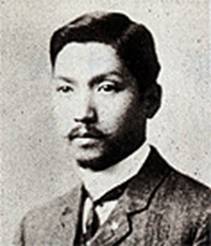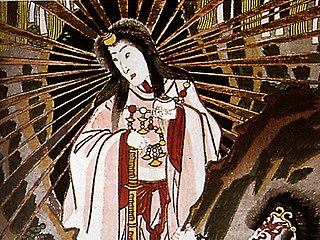
Altaic is a controversial proposed language family that would include the Turkic, Mongolic and Tungusic language families and possibly also the Japonic and Koreanic languages. The hypothetical language family has long been rejected by most comparative linguists, although it continues to be supported by a small but stable scholarly minority. Speakers of the constituent languages are currently scattered over most of Asia north of 35° N and in some eastern parts of Europe, extending in longitude from the Balkan Peninsula to Japan. The group is named after the Altai mountain range in the center of Asia.

Korean is the native language for about 81.7 million people, mostly of Korean descent. It is the official and national language of both South Korea and North Korea. The two countries have established standardized norms for Korean, and the differences between them are similar to those between Standard Chinese in mainland China and Taiwan, but political conflicts between the two countries have highlighted the differences between them. South Korean newspaper Daily NK has claimed North Korea criminalizes the use of the South's standard language with the death penalty, and South Korean education and media often portray the North's language as alien and uncomfortable.

The Turkic languages are a language family of more than 35 documented languages, spoken by the Turkic peoples of Eurasia from Eastern Europe and Southern Europe to Central Asia, East Asia, North Asia (Siberia), and West Asia. The Turkic languages originated in a region of East Asia spanning from Mongolia to Northwest China, where Proto-Turkic is thought to have been spoken, from where they expanded to Central Asia and farther west during the first millennium. They are characterized as a dialect continuum.

OK is an English word denoting approval, acceptance, agreement, assent, acknowledgment, or a sign of indifference. OK is frequently used as a loanword in other languages. It has been described as the most frequently spoken or written word on the planet.

Samuel Elmo Martin was a linguist known for seminal work on the languages of East Asia, a professor at Yale University, and the author of many works on the Korean and Japanese languages.

Ōsugi Sakae was a prominent Japanese anarchist who was jailed multiple times for his writings and activism. He was murdered alongside his partner, Itō Noe, in what became known as the Amakasu incident.

Japonic or Japanese–Ryukyuan, sometimes also Japanic, is a language family comprising Japanese, spoken in the main islands of Japan, and the Ryukyuan languages, spoken in the Ryukyu Islands. The family is universally accepted by linguists, and significant progress has been made in reconstructing the proto-language, Proto-Japonic. The reconstruction implies a split between all dialects of Japanese and all Ryukyuan varieties, probably before the 7th century. The Hachijō language, spoken on the Izu Islands, is also included, but its position within the family is unclear.
In linguistics, a stratum or strate is a historical layer of language that influences or is influenced by another language through contact. The notion of "strata" was first developed by the Italian linguist Graziadio Isaia Ascoli (1829–1907), and became known in the English-speaking world through the work of two different authors in 1932.

The Peninsular Japonic languages are now-extinct Japonic languages reflected in ancient placenames and glosses from central and southern parts of the Korean Peninsula. Most linguists believe that Japonic arrived in the Japanese archipelago from the Korean peninsula during the first millennium BCE. The placename evidence suggests that Japonic languages were still spoken in parts of the peninsula for several centuries before being replaced by the spread of Korean.
In the field of dialectology, a diasystem or polylectal grammar is a linguistic analysis set up to encode or represent a range of related varieties in a way that displays their structural differences.

In Japanese mythology, Takamagahara, is the abode of the heavenly gods (amatsukami). Often depicted as located up in the sky, it is believed to be connected to the Earth by the bridge Ame-no-ukihashi.
The classification of the Japonic languages and their external relations is unclear. Linguists traditionally consider the Japonic languages to belong to an independent family; indeed, until the classification of Ryukyuan as separate languages within a Japonic family rather than as dialects of Japanese, Japanese was considered a language isolate.

Saka, or Sakan, was a variety of Eastern Iranian languages, attested from the ancient Buddhist kingdoms of Khotan, Kashgar and Tumshuq in the Tarim Basin, in what is now southern Xinjiang, China. It is a Middle Iranian language. The two kingdoms differed in dialect, their speech known as Khotanese and Tumshuqese.
Mangareva, Mangarevan is a Polynesian language spoken by about 600 people in the Gambier Islands of French Polynesia and by Mangarevians emigrants on the islands of Tahiti and Moorea, located 1,650 kilometres (1,030 mi) to the North-West of the Gambier Islands.
The traditional periodization of Korean distinguishes:
An azusa yumi is a sacred bow (yumi) used in certain Shinto rituals in Japan, as well as a Japanese musical bow, made from the wood of the Japanese azusa or Japanese cherry birch tree. Playing an azusa yumi forms part of some Shinto rituals; in Japan, it is believed that merely the twanging of the bowstring will frighten ghosts and evil spirits away from a house. In Japanese poetry, the word azusa yumi functions as a makurakotoba.

Comfort bag was a gift packet prepared by civilians to be sent to Imperial Japanese Military soldiers for the purpose of encouraging them. The bag contains comfort articles not issued by the Japanese Military, such as toiletries, dried fruits, canned foods, and letters of encouragement. Bags were prepared by schoolgirls or local patriotic women's societies. These activities were also made in Korea, which was then under Japanese rule, to encourage Korean soldiers in the Imperial Japanese Military.

The Han languages or Samhan languages were the languages of the Samhan of ancient southern Korea, the confederacies of Mahan, Byeonhan and Jinhan. They are mentioned in surveys of the peninsula in the 3rd century found in Chinese histories, which also contain lists of placenames, but are otherwise unattested. There is no consensus about the relationships between these languages and the languages of later kingdoms.
Chapter 37 of the Samguk sagi contains a list of place names and their meanings, from part of central Korea captured by Silla from the former state of Goguryeo (Koguryŏ). Some of the vocabulary extracted from these names provides the principal evidence that Japonic languages were formerly spoken in central and southern parts of the Korean peninsula. Other words resemble Korean or Tungusic words.
The Horserider Theory is a theory of the origins of Japan. It suggests that northern Asian 'horse-riders' influenced Japan in the 4th and 5th centuries CE. These horse-riders came from North Asia and the Korean peninsula. They conquered indigenous tribes in Japan. This led to the formation of the Yamato state. The theory is based on horse trappings found in Japanese tombs from the Kofun Period.












